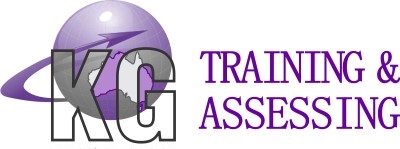Onsite Training
Is Onsite Training right for your situation?
When training is arranged to be delivered onsite, the client is required to provide all plant/equipment, applicable PPE and resources necessary to complete the practical component of the course. The client is also required to provide a suitable classroom environment to conduct the theory component.
Below is a list of the courses that can be delivered on site, along with a guide as to what equipment is required to successfully deliver the training and assessment. In some cases we may be able to substitute equipment or we may be able to bring our own equipment, individual circumstances must be discussed with Admin before confirming a booking
Forklift (LF)
- A compliant counter balanced forklift (can be electric, LP gas, petrol or diesel powered) with a daily inspection checklist/logbook
- Four varied loads weighing at least 250 kg each, including one dynamic load
- An elevated, flat, stable area for placement of loads
- A compliant racking system with varying heights (up to a minimum of 75% of the forklift’s maximum height), for placement of loads
- Timbers/gluts/dunnage for placement of loads
- Obstacles (e.g. witches hats/cones) to practice manoeuvring
- Hazard controls as required for the site (e.g. barricading, signage)
- Appropriate PPE as required (e.g. enclosed footwear, hi-vis vest), including PPE required for refuelling
- Two 2-way radios
- Faulty/defective equipment for identification and isolation
Safe Working at Heights
- A location to perform work at heights (e.g. platform with ladder access), with a fall arrest/fall prevention system in place
- Hazard controls appropriate to the site including signs and barricades
- PPE (appropriate and otherwise) for candidate to demonstrate selection and use of correct PPE
- Appropriate PPE is to include a minimum of 2 harnesses and adjustable lanyards with energy absorbers
- Tools/equipment (appropriate and otherwise) for candidate to demonstrate selection of correct tools/equipment and appropriately securing equipment at heights
Confined Space Entry
- Access to a confined space
- Atmospheric monitoring equipment (gas detector)
- Tagging and lockout equipment
- Rescue equipment
- Hazard controls as required, including signage and barriers
- Communication equipment if used (e.g. two-way radio)
- PPE (appropriate and otherwise) for candidate to demonstrate selection and use of correct PPE
- Tools/equipment (appropriate and otherwise) for candidate to demonstrate selection of correct tools/equipment and appropriate materials handling
Elevated Work Platform (WP)
- A compliant boom type EWP (boom length minimum 11m), with packing if required, and a logbook and manual
- A minimum of two compliant harnesses and adjustable lanyards with energy absorbers
- Other appropriate PPE as required (e.g. Hard hat, Steel cap boots, hi-vis vest)
- Two 2-way radios
- Hazard controls as required for the site, e.g. barricading, signage
- A selection of damaged harnesses and lanyards for inspection
Dogging (DG)
- Slewing mobile crane (minimum 7t capacity) with telescopic boom and winch
- Licenced crane operator
- Loads to shift –
- Stillage containing at least ten scaffolding standards or loose steel pipes of 200 kg or more
- Ten loose steel pipes, of at least 2 m length, that need wrapping
- An uneven load of at least two tonnes requiring slinging
- Steel plate of at least 1.5 m x 2 m x 25 mm
- A round load with a minimum diameter of 300 mm and minimum length of 3 m
- Appropriate lifting equipment for the required loads, including as a minimum -
- flexible steel wire rope (FSWR) sling
- synthetic sling
- chain sling (including shortener)
- spreader bar or lifting beam
- shackles
- eyebolts
- plate clamps
- Tagline rope (at least 16mm diameter)
- Fixed channel two-way radio and whistles
- Hazard controls as required (signage and barricades as a minimum)
- Defective equipment for inspection and isolation
- Sufficient fibre and synthetic rope (minimum 10 mm diameter) to complete four knots/bends/hitches per person
- Appropriate PPE as required (e.g. hard hat, steel cap boots, hi-vis vest, gloves)
- Fall prevention and fall arrest equipment
Rigging courses are generally not possible to run onsite, due to the type and amount of equipment that is required. If you are interested in having a Rigging course run at your site please click on the required course below to view the equipment that will be needed
Basic Rigging
Intermediate Rigging
Advanced Rigging
